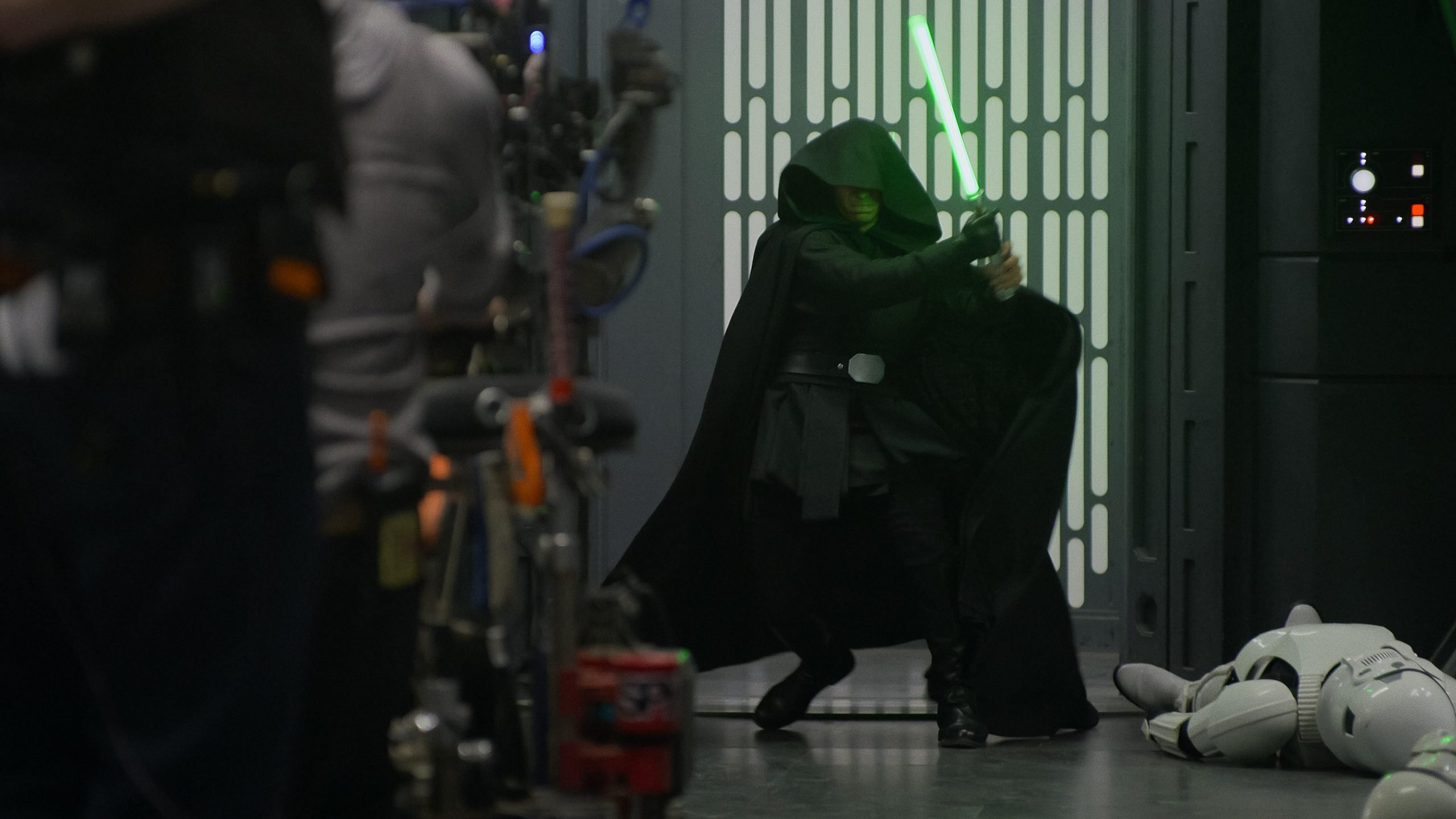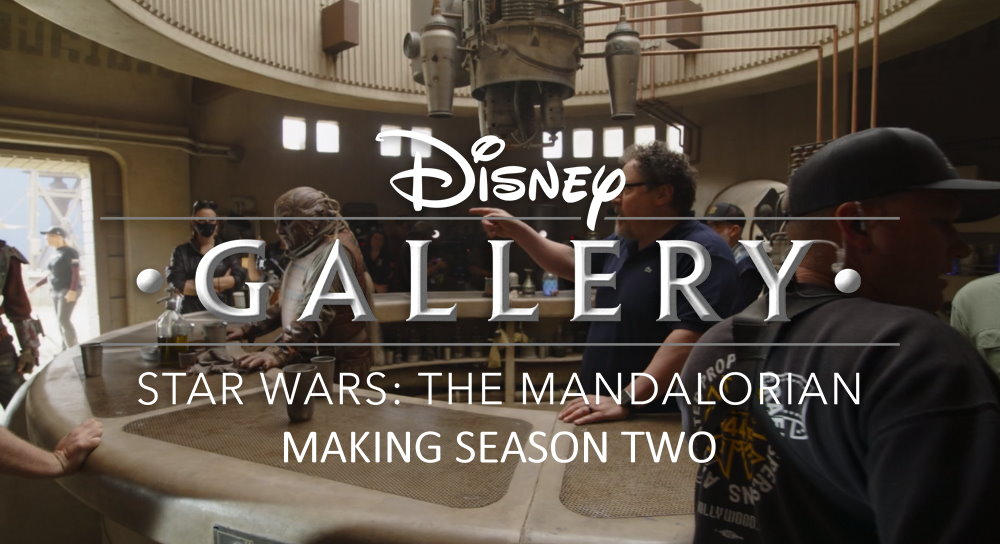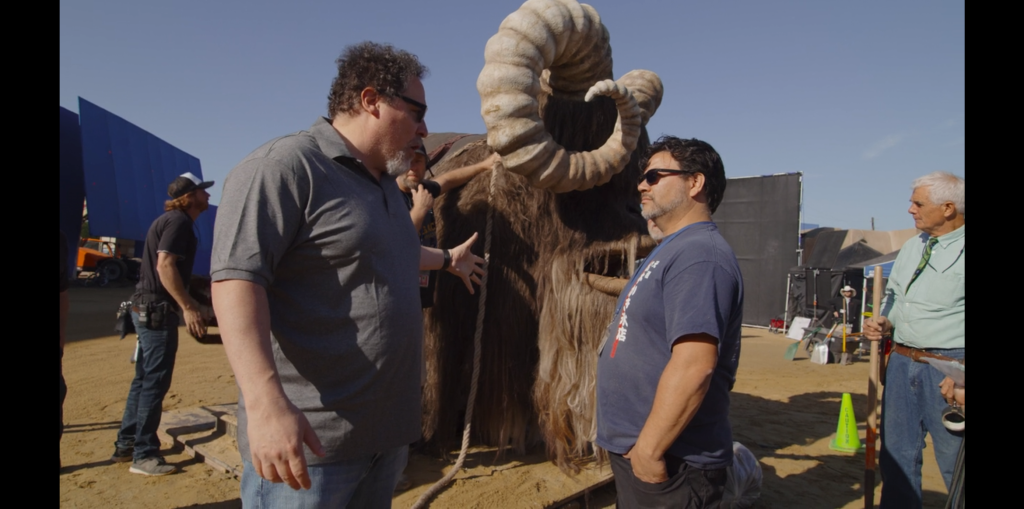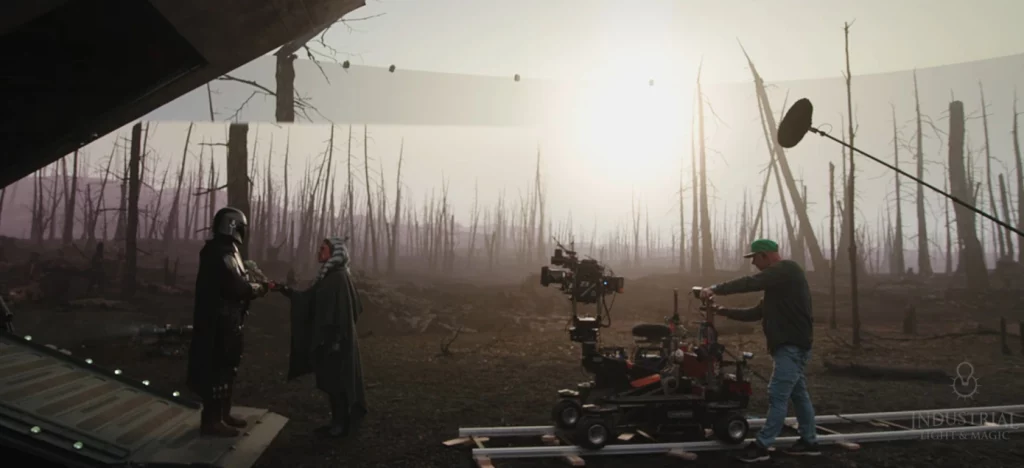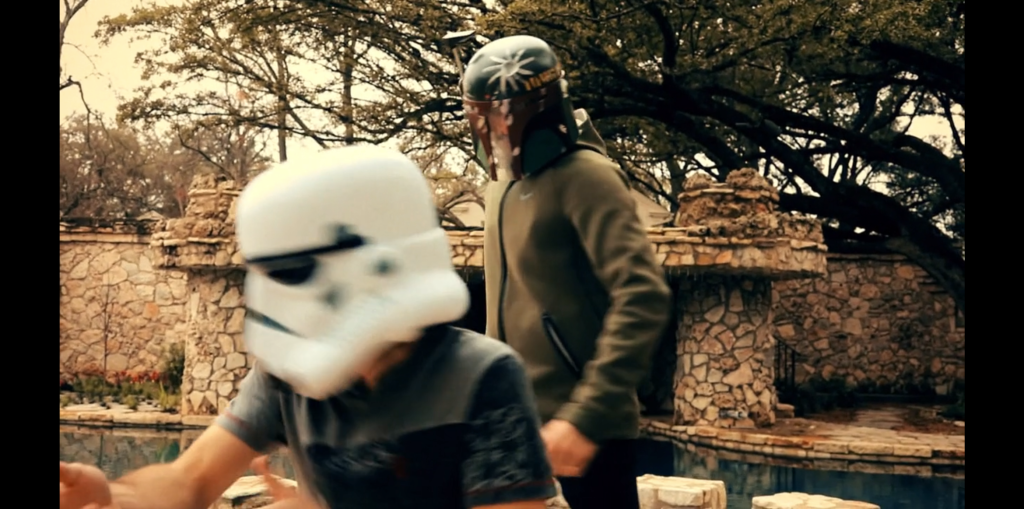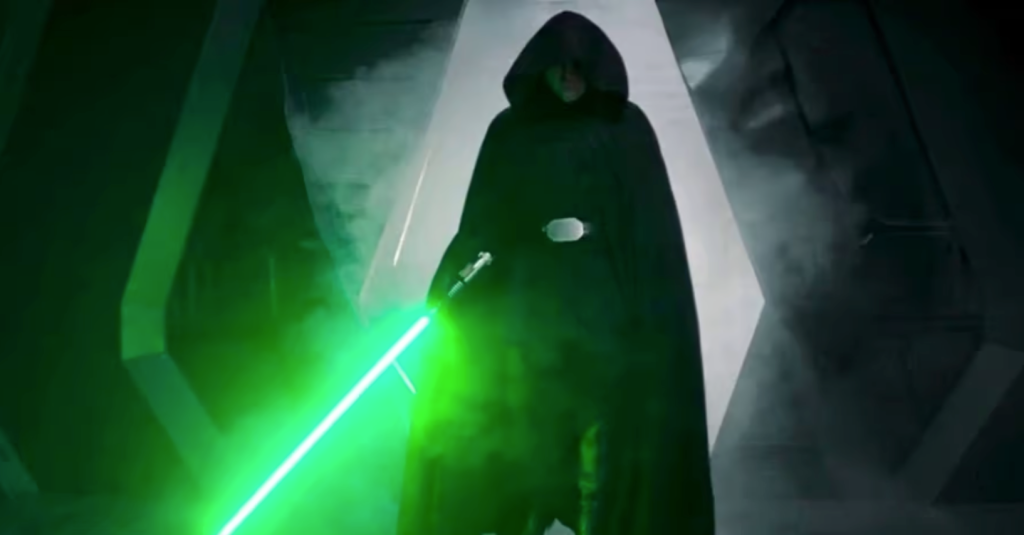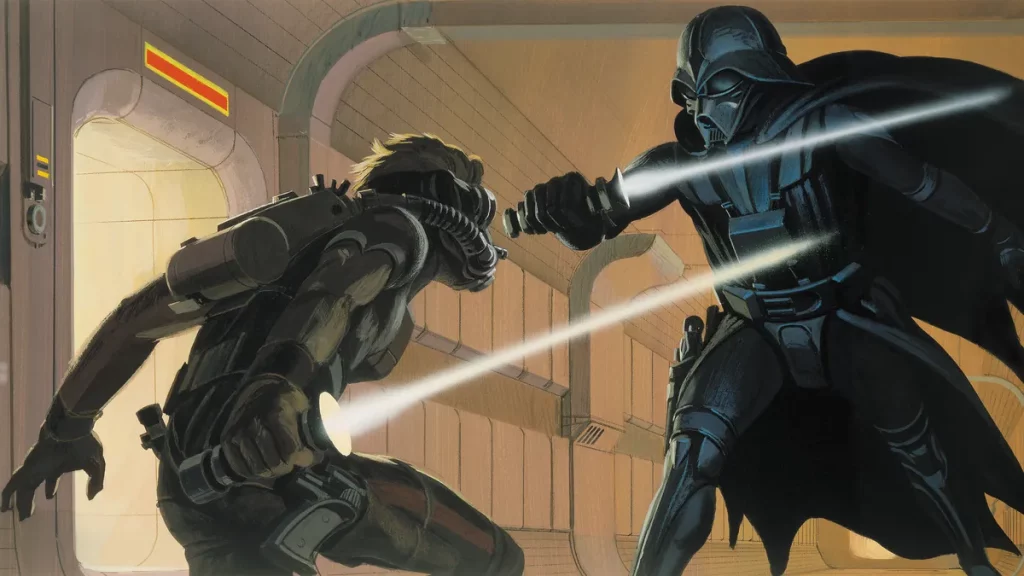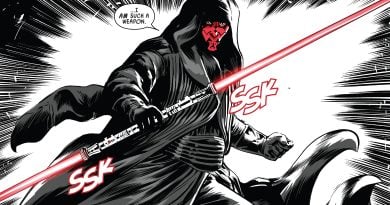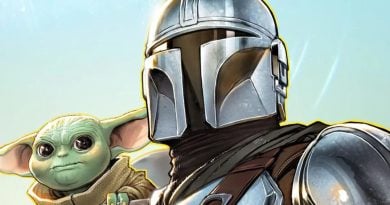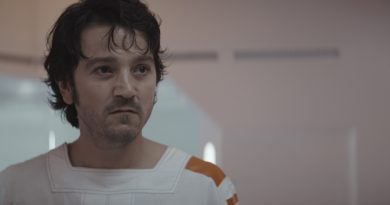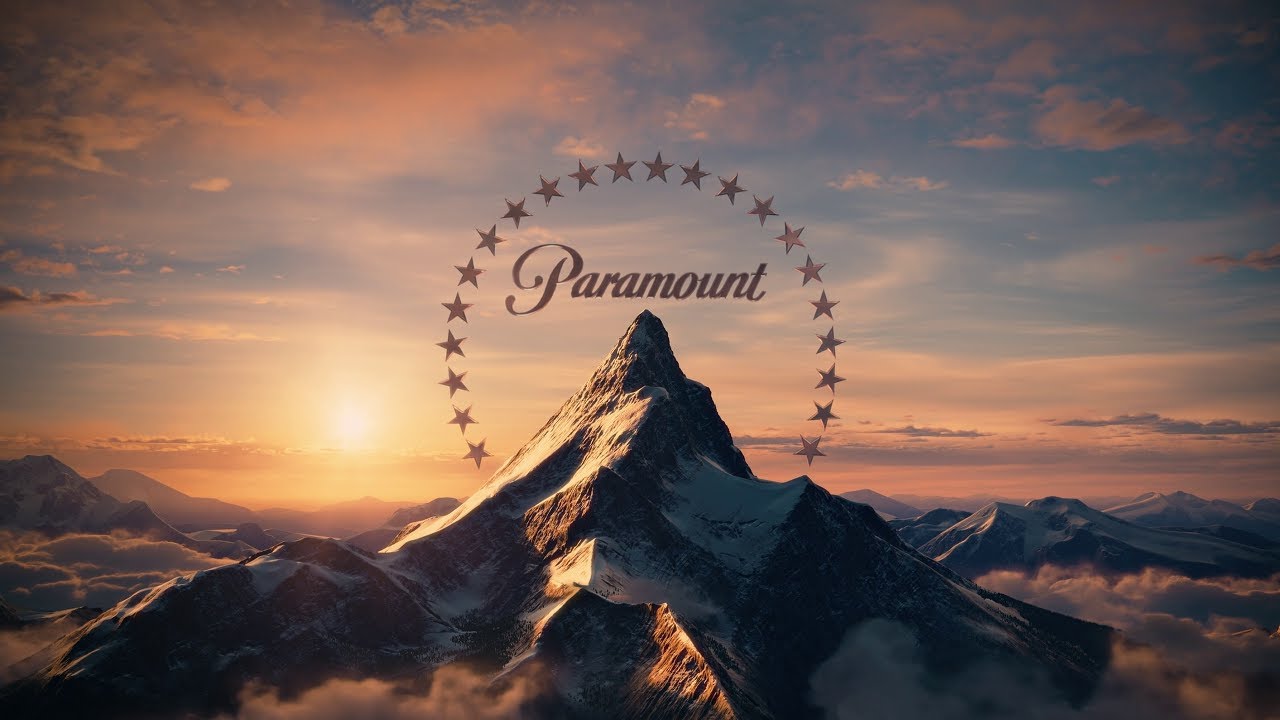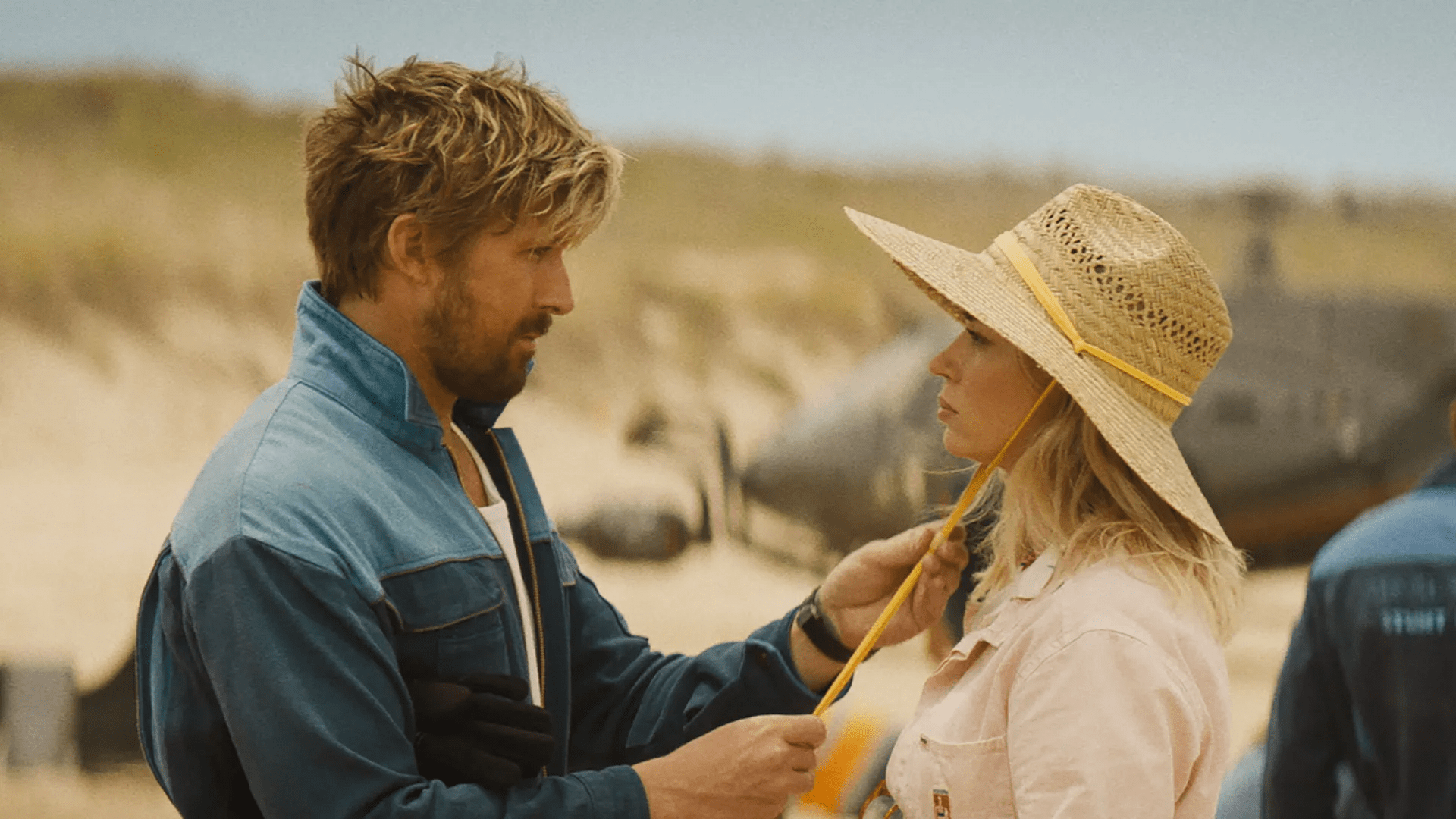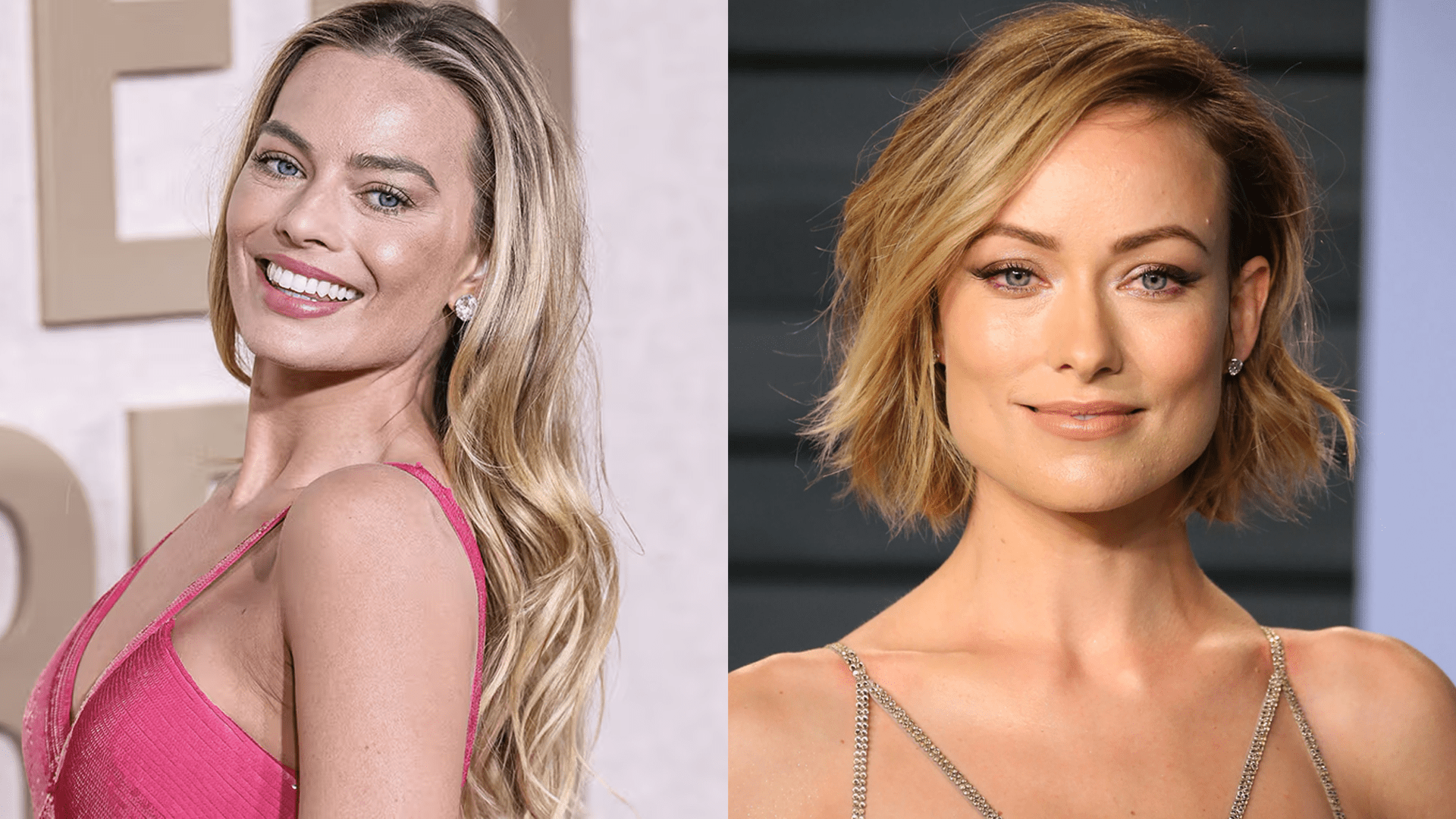Countdown to ‘The Mandalorian’ Season 3: Revisiting ‘Disney Gallery: The Mandalorian’
As we start to gear up for the release of The Mandalorian season 3 on March 1, 2023, we’re taking a look back at each episode of the show and it’s spinoffs so far through the lens of concept art. This has been a weekly series of recaps leading to the premiere of season 3 next week! You may find our previous entries in this series here.
As this is the final entry in this series, it only makes sense to feature the artists of the previously featured concept art as well as the collaborative team of creators behind the first ever live-action series in the Star Wars franchise. Bear in mind that this is not a fully conceptualized review of the series but rather an overview of Disney Gallery: The Mandalorian – Season 2.
I am admittedly a behind the scenes nerd, and in my bias opinion, no one does BTS better than the Disney Gallery series. In this season 2 installment, we follow the team of directors, both returning and new, and the team of innovative creators as they collectively dump their action figures into the sandbox and proceed to craft a familiar yet entirely new galaxy. Behind every successful series is a team of innovators, pioneers, and creators. For me, this Gallery episode confirms the MandoVerse is in highly capable hands.
The Favreau Factor
In the opening sequence we find Jon Favreau addressing the crew from Hanger 5 of the Mos Eisley set. While his role through season 1 was exclusively as the executive director, for episode 1 of season 2, The Marshal, he occupied the director’s chair.
I am continually struck by Favreau’s ability to encourage collective and creative input from any level of the crew while maintaining a clear and decisive direction — it truly is art in leadership. The footage that I particularly enjoy depicts Favreau explaining the nature of a distressed bantha to a handler as only a master storyteller and veteran Star Wars fan could.
“The first season, I wanted to make sure that I was available to oversee the whole show as an executive producer, but I always wanted to sit in the chair and be able to just interface directly and try things that may have been too ambitious for somebody who didn’t know the show as well as I did, so I was able to throw myself a lot of curveballs.” — Jon Favreau
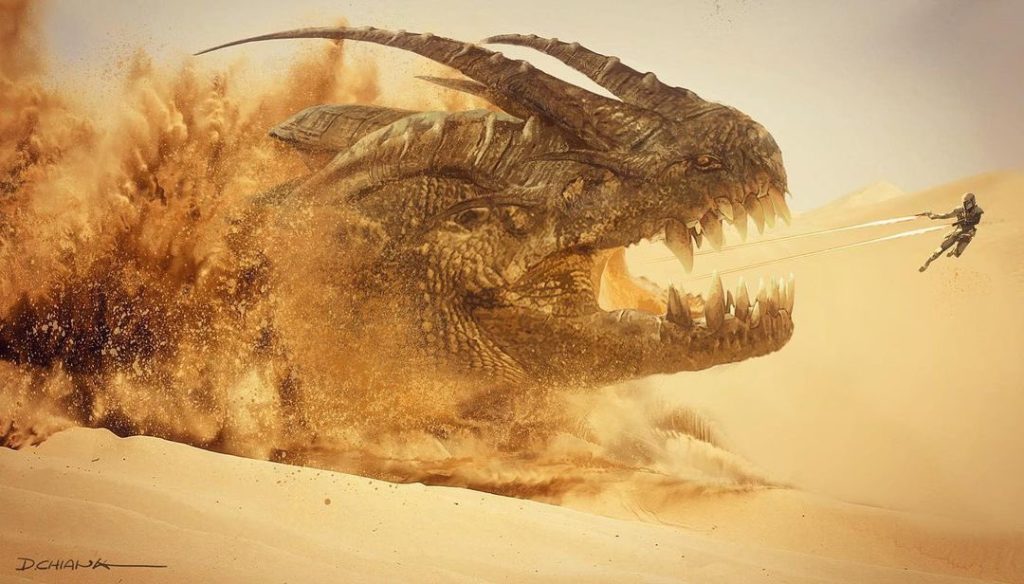
Pushing Technology, Like My Father Before Me
One thing we continually see evidence of in The Mandalorian are technological advancements. As the documentary continues, we hear from longtime ILM animation supervisor Hal Hickel. He explains the process of creating the krayt dragon, an obscure creature seen merely as a remnant skeleton in A New Hope, now made a prominent centerpiece of the first episode of season 2.
At the inception of so many of these advancements is co-producer/production designer Doug Chiang, the artist behind many of the previously featured concept drawings in this series.
“It was a huge challenge ‘cause Jon raised the bar in terms of design. He challenged us to really come up with a spectacle that would fit within the box of what we were given.” — Doug Chiang
And quite a spectacle the krayt dragon turned out to be. Chiang speaks on using “sleight of hand” and “magic”, drawing creative reference from Jaws and other horror films hiding the entirety of the monster for dramatic effect. While Chiang is featured for a brief time during this Gallery special, his influence is felt in every creature, set, and design used in The Mandalorian, much in the same way Ralph McQuarrie was the architect behind the original trilogy.
From the conceptual creation of the design team to the animation of Hal Hickel, the meticulous care from each and every creator that goes into bringing this series to life is inspiring. Each using technology for the sake of serving the story better.
While the scope of season 2 grew substantially larger, The Volume was no exception. Now scaling at 100ft long and 22ft high, and armed with new ILM-fueled color management science, this groundbreaking technology continues to provide opportunities to build otherwise prohibitive environments. A scene providing a peek behind The Volume curtain occurs during the shooting of chapter 15, The Believer, when viewers (and inner children alike) are finally given the opportunity to view the reorientation effect of Boba Fett’s ship during takeoff. A feat gloriously putting The Volume’s many capabilities on display.
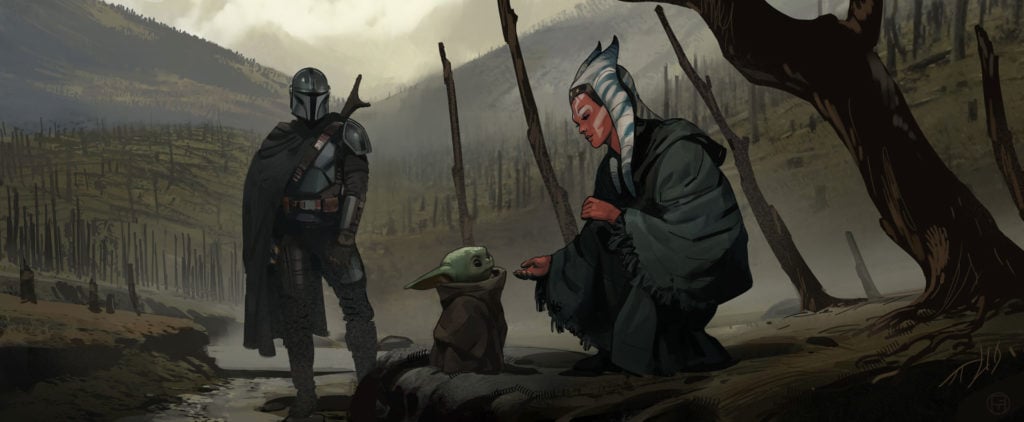
Filoni and Ahsoka: Yin and Yang
During the making of chapter 3, The Jedi, we follow the evolution of Dave Filoni as a filmmaker while he navigates the weight and responsibility of bringing Ahsoka Tano, an animated character of his own creation, into live-action. Fans of Star Wars animation that have traced the arc and character treatment of Ahsoka since The Clone Wars understand the importance of her role in the franchise. Through a beautiful Kurosawa-esque tone, Filoni delivers a moody introduction to “Snips” utilizing environment as character and samurai culture.
“It was incredibly important to Dave Filoni in particular that the audience that has grown up with Ahsoka felt like what we did in The Mandalorian was respecting what had come before.” — Richard Bluff (Visual Effects Supervisor)
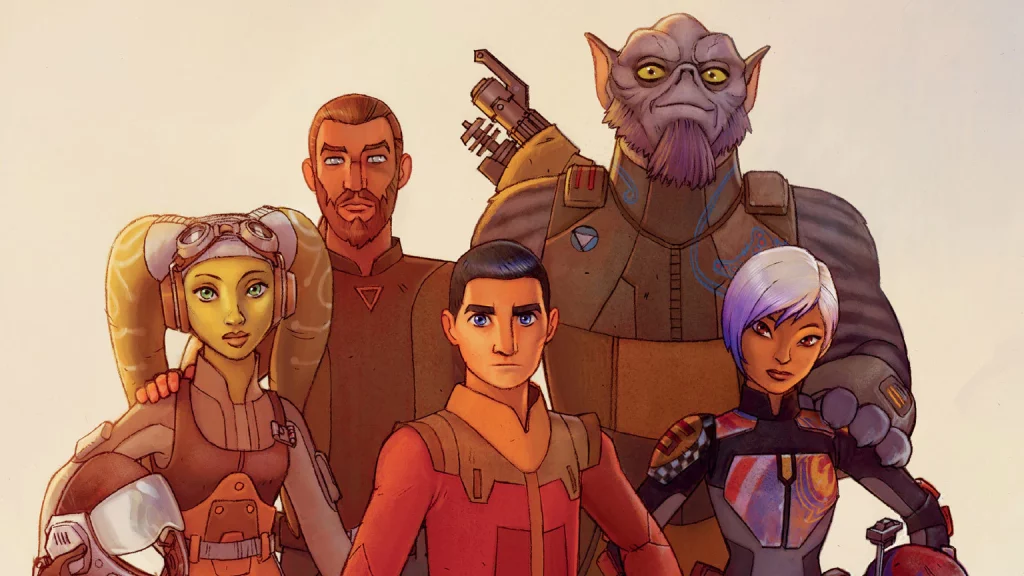
As a fan of Star Wars: The Clone Wars and Rebels, seeing beloved characters like Ahsoka Tano, played by Rosario Dawson, and Bo-Katan Kryze, played by original voice actor Katee Sackhoff, is surreal. Filoni always seems to find the most effective continuation of these characters’ arc in bringing them to live-action. I believe continuing their stories this way strengthens their origins and provides a greater landscape to explore.
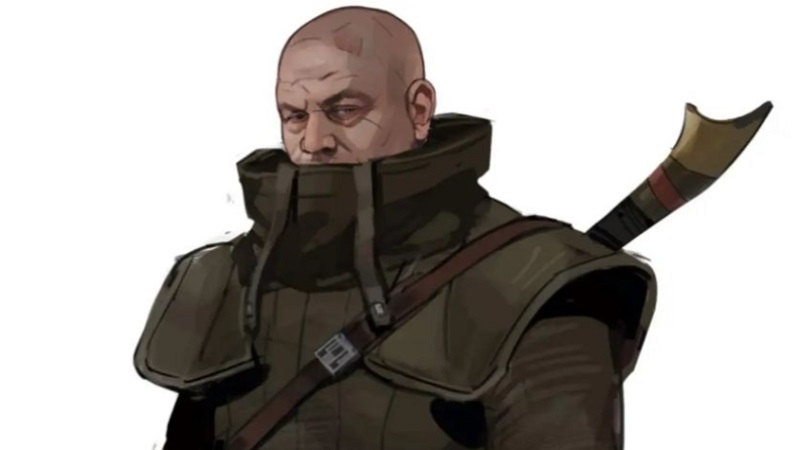
Boba’s Back
“What I think is so cool about Robert is to bring his danger and grit into an episode and usher in an iconic character. There wasn’t anybody better than Robert to bring that in.” — Pedro Pascal
I’m certain my most re-played sequence among all of the MandoVerse episodes is that of Boba Fett shredding through an army of stormtroopers in chapter 14, The Tragedy. As a lifelong fan and unofficial historian of the character, Robert Rodriguez brings a brutal fruition to a cult icon. During his interview, Rodriguez explains his approach to bringing Boba back and how satisfying it was to expand what started as a three-page battle scene into a nine-minute trooper smash-fest. One of the coolest pieces of behind the scenes footage comes from Rodriguez’s backyard as he and his sons stage an animatic only with Halloween costumes and action figures.
“If Mando is a gunslinger, Boba needs to be a barbarian.” — Robert Rodriguez
The Finale
It might have been the most emotionally moved I’ve ever been as a Star Wars fan. My family had been on this journey with Din and Grogu since the beginning. Sitting down together each week, investing in these beloved characters… we had been a clan of six watching The Mandalorian.
Director Peyton Reed recounts the creation of what would become a seminal moment in not only Star Wars, but pop culture as a whole. Executive producer Jon Favreau pulls Reed aside and drops a bomb on the unknowing director:
“And he gave me the real news that is was not, in fact, Plo Koon, but it was gonna be Luke. And I needed a moment.” — Peyton Reed
While I love learning about the current state of “deepfake” technology and the VFX used to bring Luke back, for me this episode was more about being a fan. The stories about grown people on set crying upon seeing Mark Hamill and watching the Internet reactions to follow… For me, that is what Star Wars is all about, a connection to cherished characters.
What If…?
Through this countdown series we’ve been highlighting the concept art created during the design of The Mandalorian and its spinoffs. Concept art by nature is meant to propose a question: what if? What if the krayt dragon was 600ft long? What if Mando happened upon a group of Jawas? What if we used a baby of the same species as Master Yoda? It’s the beginning of an idea, the dream phase, the catalyst to everything else. Much like the paintings of Ralph McQuarrie shaped the aesthetic of the original trilogy, so now do the designs of Doug Chiang, Brian Matyas, and the rest of the creative team behind The Mandalorian shape the adventures of Din Djarin and Grogu.
So long as creators continue to conceptualize, create, dream, and ask that question, I am confident Star Wars will continue to amaze our eyes and captivate our hearts. And it all begins with a fraternity of artists with the imagination to create entire galaxies.
Zak is a musician and professor of music in Columbus, Ohio. He and his family share a love for Star Wars and can often be found printing 3d helmets, building lightsabers or watching their favorite show, The Mandalorian.

